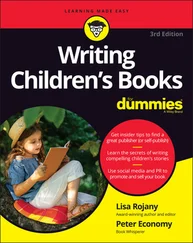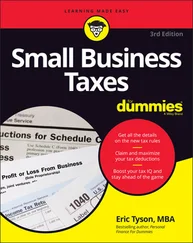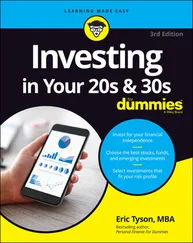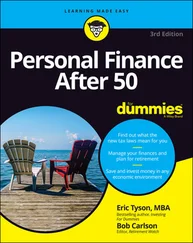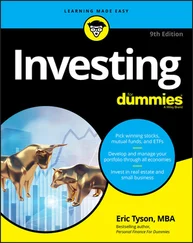Once waste is eliminated by transitioning from a linear economy to a circular economy, the demand for raw materials will drop dramatically and the value of materials existing within the circular lifecycle will increase because of the lack of replacement costs required. For example, Desso, a company that produces an array of carpets and artificial turfs, is already discovering the waste reduction and value associated with alternative business strategies. Through a combination of designing materials to be fully recyclable and managing to lease out certain products, it has invested in generating longer-lasting products and harvesting the resulting value.
 It’s critical for the concept of waste to be reconsidered within our global operations. Waste as an idea is flawed from the beginning, by assuming that it needs to exist. Every piece of packaging can be reused. Every amount of water can be utilized for another purpose. Every piece of organic waste that stems from agriculture can be returned to the fields to act as a fuel source for next year’s harvest. Ultimately, harnessing the power of the circular economy isn’t about using as little of a resource as possible. Instead, it’s about developing efficient systems that don’t care how much of something you use, because, at the end of the day, it won’t go to waste. Creating this reality will require that we humans change the way we view and manage what we consider waste and adjust our processes to identify and utilize its potential value.
It’s critical for the concept of waste to be reconsidered within our global operations. Waste as an idea is flawed from the beginning, by assuming that it needs to exist. Every piece of packaging can be reused. Every amount of water can be utilized for another purpose. Every piece of organic waste that stems from agriculture can be returned to the fields to act as a fuel source for next year’s harvest. Ultimately, harnessing the power of the circular economy isn’t about using as little of a resource as possible. Instead, it’s about developing efficient systems that don’t care how much of something you use, because, at the end of the day, it won’t go to waste. Creating this reality will require that we humans change the way we view and manage what we consider waste and adjust our processes to identify and utilize its potential value.
Accepting this idea that waste doesn’t exist isn’t just a concept that should be limited to business operations. To account for the complexity of the global economy, this type of circular thinking should be addressed in every sector of a product’s lifecycle. Customers, governments, suppliers, and communities should all be included. If customers demand that a product be made with 100 percent recycled materials, then the suppliers, manufacturers, and business entities involved will be forced to address their demand within their operations. This future idea of all companies operating within a circular fashion (by the way, check out Chapter 18— our chapter on the fashion industry) isn’t so far off into the future. Companies that are tackling this task early on will be better positioned to compete against other companies that take on this initiative when the circular economy is no longer optional, but mandatory.
All materials have another use
The take-make-waste philosophy suggests that once a material or product is used, it no longer serves a purpose. That is so unbelievably far from the truth, and it’s one of the main misunderstandings that has caused the global economy to produce so much waste and pollution to begin with. The recycling and reuse (or repurposing) of materials, which is one key principle of the circular economy framework, is a prevalent standard of the natural world.
Within the circular economy framework, materials are kept in flow by the continued repurposing or reuse of materials. In addition, these materials have the potential to transfer between organic and inorganic states via a particular biogeochemical cycle.
 The biogeochemical cycle may sound complex, but it is essentially the range of vehicles used to circulate the nutrients of our planet! Organic matter can then be transferred between their various human uses and these natural storage compartments. But, for this management of materials to work properly, the way our global products are engineered and designed must be built to facilitate this material recycling to eliminate waste and provide a quality service to mankind.
The biogeochemical cycle may sound complex, but it is essentially the range of vehicles used to circulate the nutrients of our planet! Organic matter can then be transferred between their various human uses and these natural storage compartments. But, for this management of materials to work properly, the way our global products are engineered and designed must be built to facilitate this material recycling to eliminate waste and provide a quality service to mankind.
Two standard practices of engineering can help design the world: traditional (or human) engineering and ecological engineering. Traditional engineering often results in the production and collection of various waste materials that not only offer no value to other systems but also hold the potential to damage the value of adjacent systems. The design’s priority is to provide humans with a service, and it doesn’t acknowledge the externalized costs associated with its implementation. Ecological engineering — or the design of sustainable ecosystems that integrate human society with its natural environment for the benefit of both — does just the opposite. Ecological engineering aims to minimize the externalized costs associated with the design and to discover creative ways to redirect its waste as an input for another system. An example of this concept may be the utilization of riparian acreage — the vegetation barrier between land and a body of water, in other words — to filter inorganic fertilizers out of stormwater runoff before it enters rivers and streams.
By reviewing the Ellen MacArthur Foundation’s butterfly diagram — see Chapter 10for a deeper dive — you’ll see that organic and inorganic materials must flow through their individual systems differently. The process of harnessing and maximizing the value of inorganic materials requires different processes than organic materials. Within both systems, however, waste can become a non-issue as the output of one system can feed into another system.
Looking at reuse programs
Many of the items tossed into the garbage could be utilized by other people. This isn’t a new concept — people have been having lawn sales and garage sales for decades now. With the evolution of Craigslist and Facebook Marketplace, for example, the ability to sell items you no longer have a need for is becoming easier. You no longer have to set up a dozen folding tables out on your front lawn and then paste little round, neon stickers on that creepy porcelain baby doll that your grandmother gave you. You can post your sale online instead, where someone who didn’t have a weird grandma might find it. Aside from online marketplaces, thrift stores provide an excellent setting for gently used items to find new owners, instead of being tossed into the landfill.
 Keeping items in use longer is one of the main principles of the circular economy. Finding a new destination for what you might consider a bunch of junk is the right move, no matter how trashy it might be. Aside from household items, one of the next booming industries will be the salvaging and resale of building materials. Entire building certification systems support this diversion of construction and demolition waste already —the United States Green Building Council, for example — but not on a whole-building scale. Check out Chapter 17for more about building-reuse strategies.
Keeping items in use longer is one of the main principles of the circular economy. Finding a new destination for what you might consider a bunch of junk is the right move, no matter how trashy it might be. Aside from household items, one of the next booming industries will be the salvaging and resale of building materials. Entire building certification systems support this diversion of construction and demolition waste already —the United States Green Building Council, for example — but not on a whole-building scale. Check out Chapter 17for more about building-reuse strategies.
Exploring community cooperatives and exchanges
Sometimes, it makes little sense for a single person to purchase a tool or item that they’ll use for only a short time. This is why you’ll find that hardware stores like Lowe’s and Home Depot provide their customers with a variety of rental opportunities for tools, carpet cleaners, and even trucks. Imagine if you had to buy a moving van every time you wanted to move into a new home — it just doesn’t make sense. With this understanding, many cities now offer exchange programs or co-ops to provide their community members with access to a wide array of items — but without the cost of owning them. The Station North Tool Library in Baltimore, Maryland ( www.stationnorthtoollibrary.org ) is a great example of this successful platform. It offers not only a range of tools but also educational programs, at very little cost, to teach homeowners how to fix a wide range of items in their homes. The main goal of community cooperatives is to primarily keep usable items out of the local landfill and at the same time provide access to those items to a wide range of people at minimal cost (typically, via a membership fee).
Читать дальше
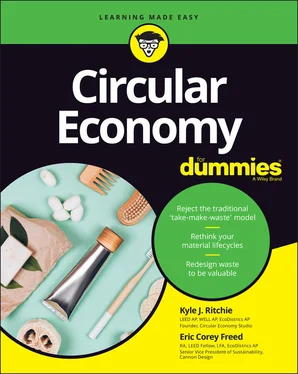
 It’s critical for the concept of waste to be reconsidered within our global operations. Waste as an idea is flawed from the beginning, by assuming that it needs to exist. Every piece of packaging can be reused. Every amount of water can be utilized for another purpose. Every piece of organic waste that stems from agriculture can be returned to the fields to act as a fuel source for next year’s harvest. Ultimately, harnessing the power of the circular economy isn’t about using as little of a resource as possible. Instead, it’s about developing efficient systems that don’t care how much of something you use, because, at the end of the day, it won’t go to waste. Creating this reality will require that we humans change the way we view and manage what we consider waste and adjust our processes to identify and utilize its potential value.
It’s critical for the concept of waste to be reconsidered within our global operations. Waste as an idea is flawed from the beginning, by assuming that it needs to exist. Every piece of packaging can be reused. Every amount of water can be utilized for another purpose. Every piece of organic waste that stems from agriculture can be returned to the fields to act as a fuel source for next year’s harvest. Ultimately, harnessing the power of the circular economy isn’t about using as little of a resource as possible. Instead, it’s about developing efficient systems that don’t care how much of something you use, because, at the end of the day, it won’t go to waste. Creating this reality will require that we humans change the way we view and manage what we consider waste and adjust our processes to identify and utilize its potential value. The biogeochemical cycle may sound complex, but it is essentially the range of vehicles used to circulate the nutrients of our planet! Organic matter can then be transferred between their various human uses and these natural storage compartments. But, for this management of materials to work properly, the way our global products are engineered and designed must be built to facilitate this material recycling to eliminate waste and provide a quality service to mankind.
The biogeochemical cycle may sound complex, but it is essentially the range of vehicles used to circulate the nutrients of our planet! Organic matter can then be transferred between their various human uses and these natural storage compartments. But, for this management of materials to work properly, the way our global products are engineered and designed must be built to facilitate this material recycling to eliminate waste and provide a quality service to mankind.
